
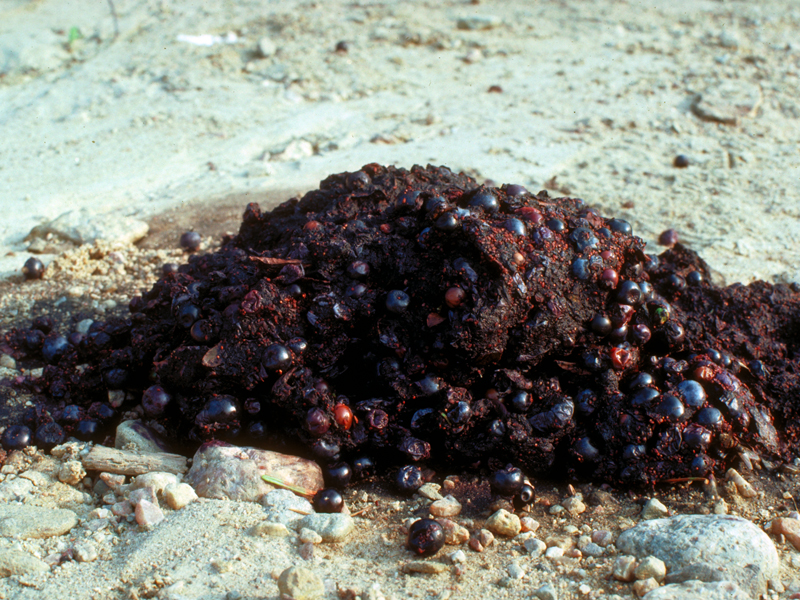
Scat / Droppings
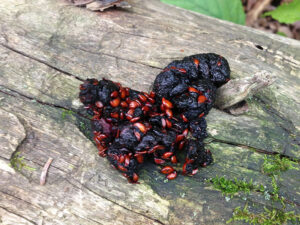
People are always surprised to find that black bear scats do not have an unpleasant smell if the bears ate only fruit, nuts, acorns, or vegetation. In those cases, the scats smell like a slightly fermented version of whatever the bear ate. Distinctive smells like strawberries come through clearly. Scats that contain meat or garbage smell somewhat foul but nothing like the feces of dogs, cats, or primates.
Scats reveal what bears ate. In addition to the smell, look for seeds, leaf fragments, insect parts, hairs, bone fragments, scales, etc. Match these clues up with items in the area to learn bear diets. Sometimes finding matching items takes close observation. It forces a person to learn details of vein patterns in leaves and exactly what different kinds of seeds or hairs or insects look like. Look under a microscope for more detail.
Black bear scats typically weigh ½ to 1 pound or more. They may be tubular, loose, or watery. Loose or watery scats do not mean the bear is sick—only that the bear was eating moist foods. Scats from succulent vegetation or berries are typically loose. Scats from meat may be watery.
Bear scats don’t hold the contagious microorganisms some carnivore droppings do. Blood tests showed that researchers who had handled bear scats for decades were negative for any of these microorganisms.
Black Bear Scats:
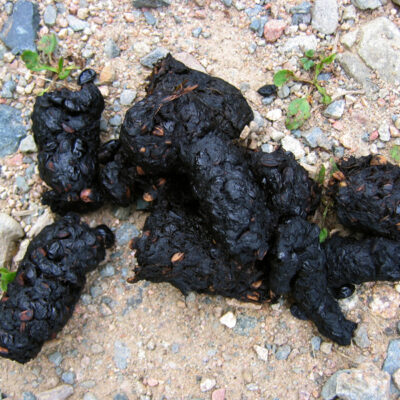
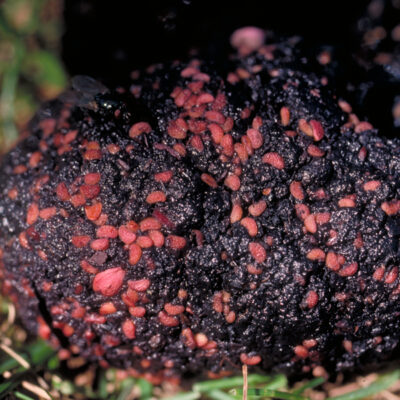
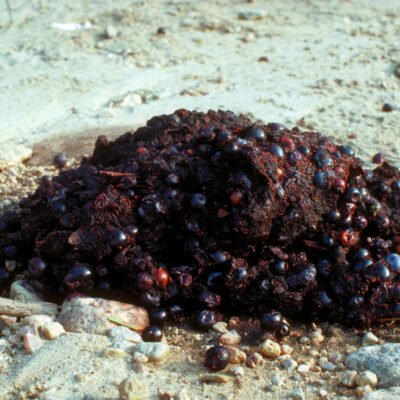
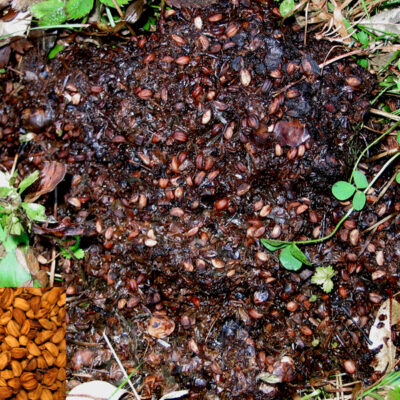
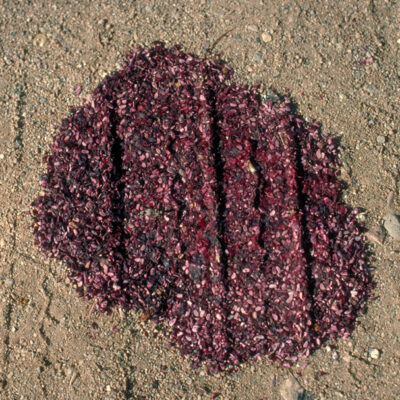
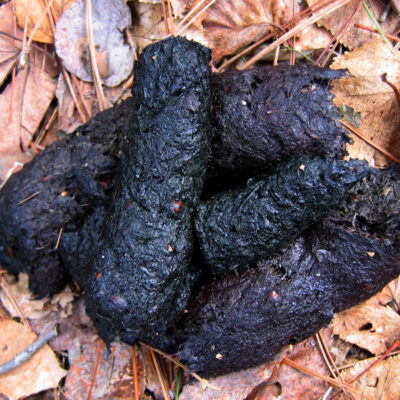
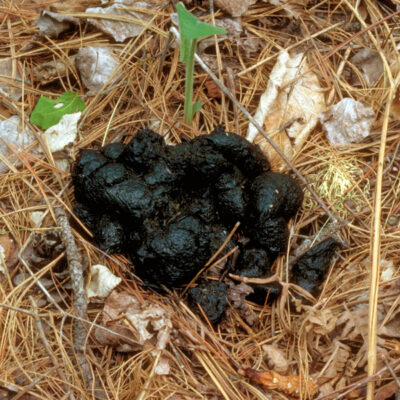
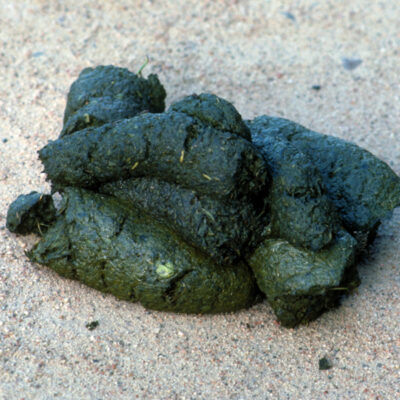
We are a 501(c)(3) non-profit that relies entirely on the support of visitors, merchandise sales and people like you. We do not receive any state or federal funding.
Help support our mission.
Donate Now